Investors can buy growth stocks using the same brokerage account as they use to buy stocks and ETFs in other sectors. While buying growth stocks allows investors to begin investing in low-priced stocks set to increase in value, it is not a strategy that comes without risks. Read on to learn the growth stocks definition, what makes a growth stock prepared to rise in value and how you can begin investing in these companies.
What Are Growth Stocks?
What is a growth stock? Though the growth stock definition you'll hear might vary depending on the investor you're speaking to and the industry you're examining, these stocks usually come from companies focused on reinvesting profits into new endeavors. Instead of distributing a portion of profits to investors through dividends, these companies typically focus on retaining investors through new and exciting advancements and projects.
Growth stocks may divert funds to various projects, including the following:
- Research and development: Growth companies may allocate a significant portion of their profits towards research and development activities to create new products, services or technologies that can help them stay competitive and capture additional market share.
- Marketing and advertising: Companies looking to expand into new markets may also invest in marketing and advertising campaigns to promote their brand and attract new customers.
- Hiring and training: As companies grow and expand, they may need to use a larger portion of their profits to hire and train new employees. Though it may not directly lead to new market share, investing in a robust employee training infrastructure can increase profits through enhanced customer experience.
- Acquisitions: In some cases, growth companies may use profits to acquire other companies to expand their product lines, customer base or geographic reach.
Overall, reinvesting profits back into the company aims to fuel growth and increase shareholder value over the long term. You may have heard the term "value investing" — learn about growth vs. value investing.
Examples of Growth Stocks
Let's take a quick look at some examples of growth stocks to give you an idea of some of the most successful growth stocks on the market that have shown continuing success.
Amazon.com Inc. (NASDAQ: AMZN), a global e-commerce behemoth, has earned its reputation as a growth stock through its multifaceted business empire. Known for its expansive online marketplace and diverse services, Amazon boasts a comprehensive range of products, from everyday consumer goods to an extensive library of digital content.
Its unwavering commitment to expansion and innovation sets Amazon apart as a growth stock. The company continually diversifies into various sectors, exemplified by its robust presence in cloud computing through Amazon Web Services (AWS), dominance in the digital streaming arena with Amazon Prime Video, and the introduction of cutting-edge smart devices like Amazon Echo. Amazon's strategic emphasis on artificial intelligence (AI) and data-driven operations bolsters its growth potential.
These factors, combined with its attractive valuation and consistent track record of revenue growth, firmly establish Amazon as a prime example of a growth stock poised for sustained expansion.
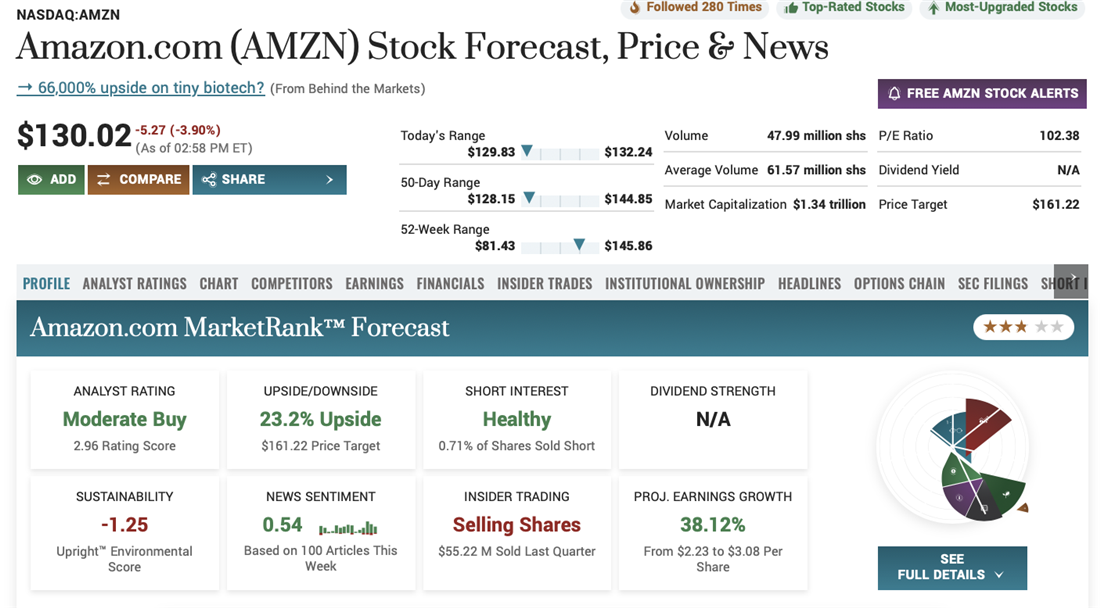
Meta Platforms Inc. (NASDAQ: META), formerly known as Facebook, stands as a technology conglomerate with a transformative presence in the social media landscape. Operating an impressive portfolio of platforms, including Facebook, Instagram, Threads and WhatsApp, Meta has carved its niche as a growth stock.
The company's journey toward growth underpins its relentless pursuit of emerging technologies, most notably artificial intelligence (AI). Moreover, Meta's expansion into promising sectors such as virtual and augmented reality (VR/AR) positions it as a formidable player in the tech world. Meta has poised itself for substantial future growth with a data-driven business model and a colossal user base. Its attractive valuation further underscores its status as a growth stock, appealing to investors seeking companies with promising growth trajectories.
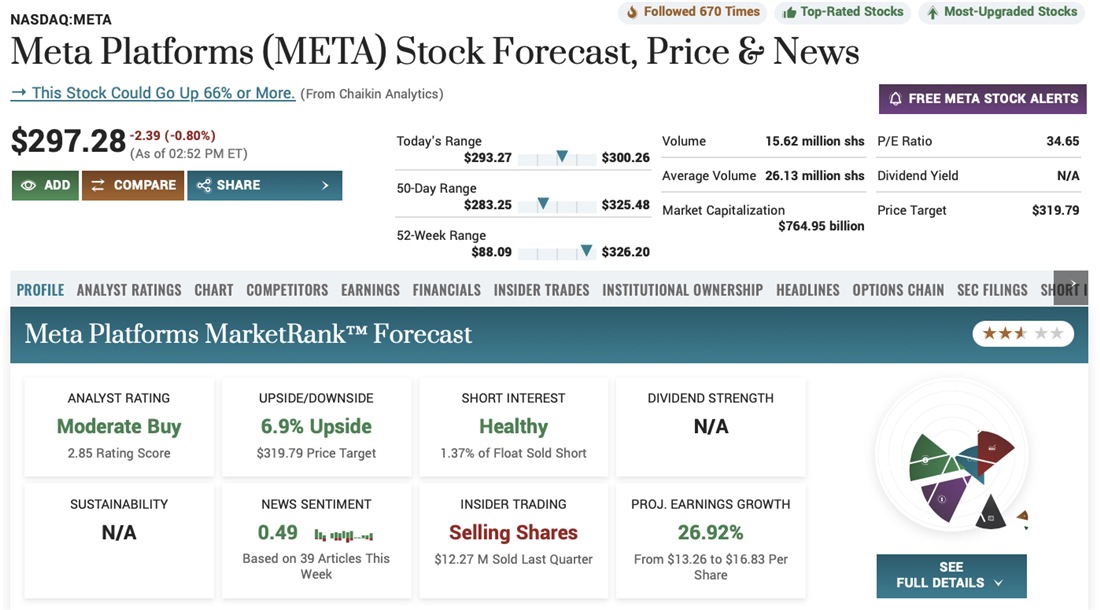
Apple Inc.
Apple Inc. (NASDAQ: AAPL), an iconic American technology company, has solidified its status as a growth stock through its unwavering commitment to innovation. Renowned for designing, manufacturing and marketing a wide array of consumer electronics, including the iconic iPhone, iPads, MacBooks and wearable devices such as the Apple Watch, Apple's dedication to research and development (R&D) sets it apart. Much of its revenue channels into the relentless pursuit of cutting-edge products and technologies.
This steadfast commitment to innovation and a fiercely loyal customer base underlines its strong growth potential. While Apple offers lower dividend yields than other income-generating stocks, it remains a compelling choice for growth-oriented investors, who value the company's capacity to evolve and lead in the tech industry.
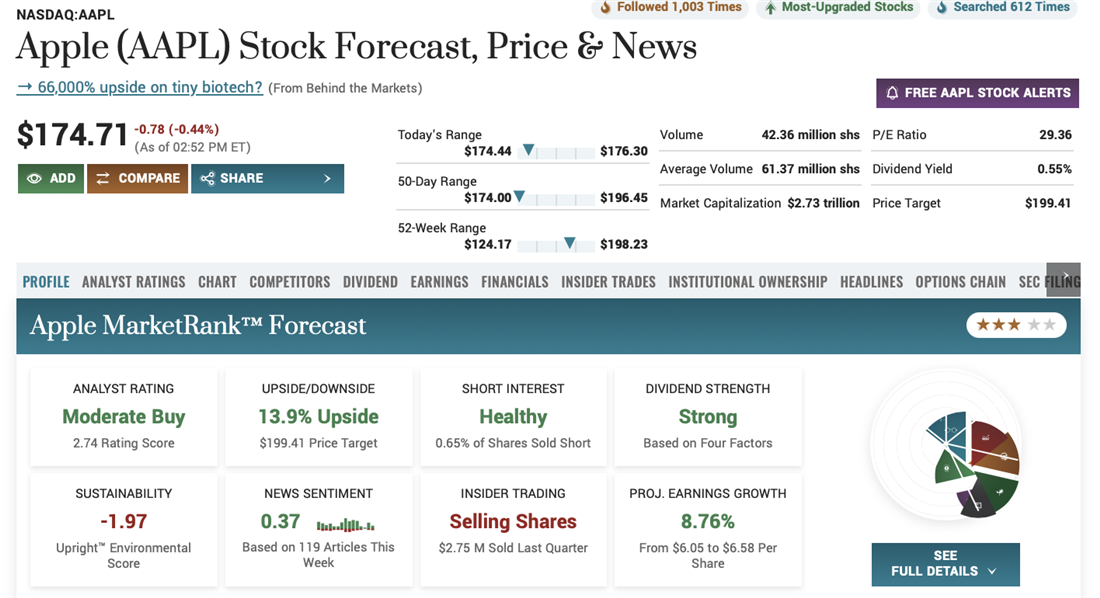
Netflix Inc.
Netflix Inc. (NASDAQ: NFLX), a global streaming powerhouse, has earned its status as a growth stock through its impressive subscriber-centric growth strategy. Known for its video-on-demand services, Netflix offers subscribers an extensive library of movies, TV shows and original content in nearly every corner of the globe except China. Its unceasing drive for content innovation makes Netflix a growth stock of note.
The company continuously produces and acquires new TV and film content, fueling its meteoric growth. Netflix's expanding cash flow and profit margins signal the potential for significant earnings growth in the foreseeable future. It provides content through streaming services aligned with evolving media consumption trends, positioning it as a frontrunner in the digital entertainment sector.
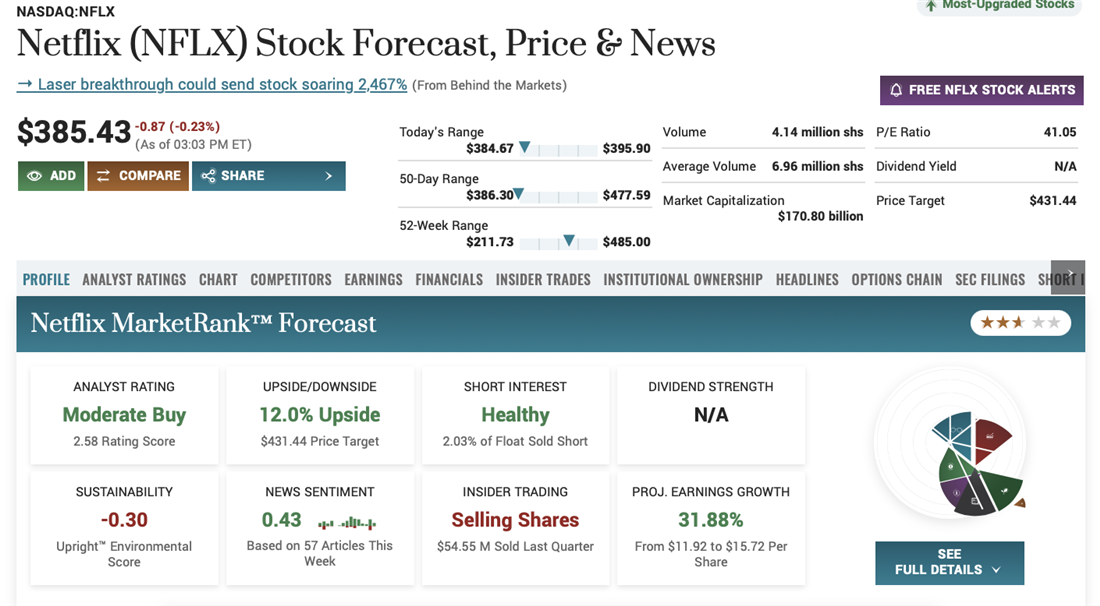
How to Assess Growth Stocks
Now that we've answered the question of what growth stocks are, you can begin comparing companies you want to add to your portfolio. The following are some major features you'll want to consider before you buy the best growth stocks.
- Revenue growth: One of the key characteristics of growth stocks is that they should grow faster than the overall market. Look for companies that have a track record of strong revenue growth in the past, which may indicate that the company has a reliable plan for future profit increases.
- Earnings growth: In addition to revenue growth, you should also look for companies with a history of strong earnings growth or the potential to generate strong earnings growth in the future. This indicates that the company effectively manages costs and generates healthy profits.
- Market opportunity: Consider the size and growth potential of the company's market when debating which growth stocks have the best chance of providing worthwhile returns. Companies operating in large, growing markets may have more growth opportunities and attractive investment opportunities.
- Competitive advantage: Look for companies with a competitive advantage or a unique value proposition that sets them apart. This could include things like a strong brand, innovative patents or proprietary technology.
- Valuation: Finally, you should consider the valuation of the company's stock relative to its growth prospects. Growth stocks are often priced at a premium, so you should look for companies that are trading at a reasonable valuation given their growth potential. Browse a complete list of professional stock price targets and analyst ratings here to learn about company valuation.
Investing in a growth stocks ETF (for example, the SPDR Portfolio S&P 500 Growth ETF (NYSE: SPYG) can be helpful if you're looking for a quick way to add these expansion-oriented stocks to your portfolio while also diversifying across the market.
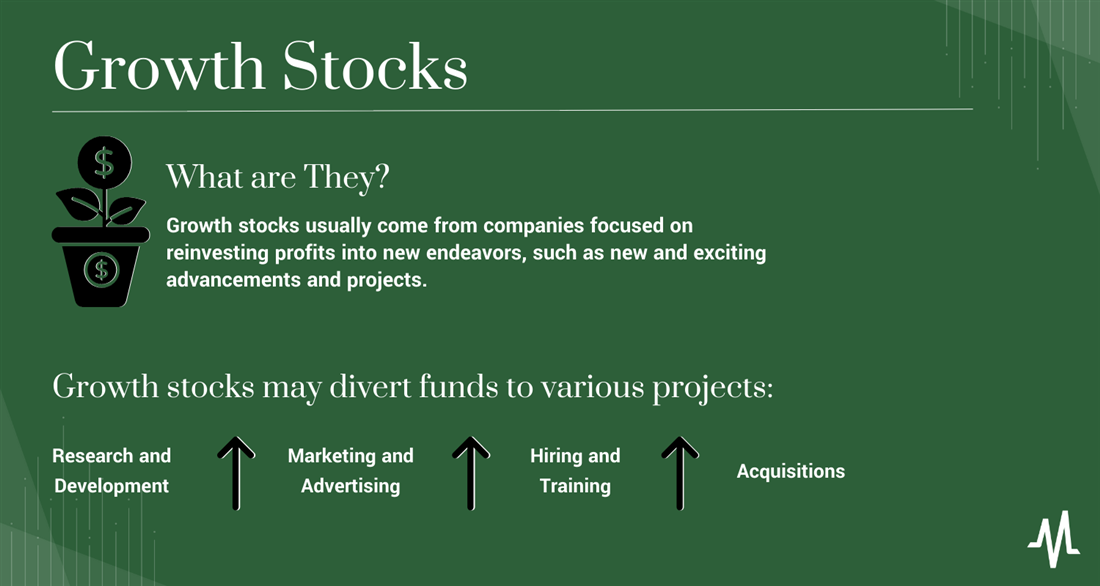
How to Find Growth Stocks
When narrowing down your list of potential investments, knowing which industries are best known for growth stocks can be helpful. The following high-growth industries are well-known for their concentration of growth stocks.
- Technology: The technology industry is known for its rapid pace of innovation and disruption. Companies in this industry often have the potential to grow quickly as they develop and market new products and services.
- Healthcare: The healthcare industry should also experience strong growth in the coming years due to factors such as an aging population, increased demand for healthcare services and advances in medical technology.
- E-commerce: With the rise of online shopping and the growth of the digital economy, e-commerce companies should continue multiplying in the future. Spurred by the COVID-19 pandemic, e-commerce levels should stay in demand even as physical stores reopen.
- Renewable energy: With growing concerns about climate change and the shift toward cleaner sources of energy, companies that develop and produce renewable energy technologies may have strong growth potential.
Consider incorporating multiple growth stocks across industries and purchasing many types of stock to diversify across this sometimes risky sector.
How to Invest in Growth Stocks
Most growth stocks trade on major markets, including the New York Stock Exchange and the NASDAQ. If you already have a brokerage account, you can use your existing account to research and buy shares of stock using the same method as any other investment. If you're unfamiliar with investing, read on for a complete beginner's guide to buying stock.
Step 1: Open a brokerage account.
A brokerage account is a type of investment account that allows you to buy and sell securities, such as stocks, bonds, mutual funds and ETFs. If you don't already have a brokerage account, you'll need to research major brokers and open an online account before you can begin buying and selling shares of stock. Learn more about major brokerage options and what you'll need to open an account.
Step 2: Research stock options.
After opening and funding your account, decide which investments you'd like to add to your portfolio. You can use your broker's stock screening tools to filter for stocks with high growth metrics, including revenue growth, earnings growth and other key performance indicators that may signal strong future growth potential. Consider growth stock mutual funds as well.
Step 3: Place a buy order.
After identifying a stock or ETF you want to add to your portfolio, place a buy order through your brokerage account. While most brokers offer a wide range of order types, the two most common orders you'll use to buy and sell growth stocks are market orders and limit orders.
- Market orders: A market order is a type of order in which you buy or sell a security at the best available price on the market when you place the order. You should use this type of order when the speed of execution is more important than the price at which the trade goes through and when there is high liquidity in the market.
- Limit orders: A limit order is a type of order in which you buy or sell a security at or below a specified price. Limit orders can help you avoid buying or selling a security at a less favorable price than what you are willing to accept. However, there is no guarantee that your brokerage will execute the limit order if the market price does not reach your specified price.
After placing your order, your broker will execute it according to your terms. If the broker can execute the order, you'll see your shares in your brokerage account.
Step 4: Monitor your investment.
After buying your shares, monitor your investments and how they change in value. If you're using a short-term trading strategy, consider placing a stop-loss order to limit your losses if your investment sharply drops in value.
Pros and Cons of Investing in Growth Stocks
Consider both the benefits and drawbacks of investing in growth stocks before adding them to your portfolio.
Pros
Let's look at the benefits of growth stocks first:
- High growth potential: Growth stocks are known for their potential to generate substantial capital appreciation over time. Companies in this category often exhibit robust earnings growth, which can lead to impressive returns on investment. Learn more about low PE growth stocks.
- Innovation and disruption: Growth companies are frequently pioneers in innovation, introducing groundbreaking products, technologies, and services. Investing in such companies can offer the opportunity to benefit from transformative industry changes.
- Portfolio diversification: Including growth stocks in your investment portfolio can enhance diversification. They tend to have different risk profiles than value or income stocks, which can help balance your overall risk exposure.
- Long-term wealth-building: Growth stocks are well-suited for long-term investors looking to build substantial wealth. Their potential for compounding returns can lead to significant portfolio growth.
Cons
Now, the downsides to growth stocks:
- Higher risk: Growth stocks are often riskier than value stocks, as they may be more volatile and subject to market fluctuations. Learn about high PE growth stocks.
- Uncertainty: The future growth potential of a company may be uncertain, and you may not see all growth expectations met. Both of these situations may lead to significant declines in stock price.
- Limited dividends: Growth stocks tend to reinvest profits into operations, leaving less for dividend distributions, which can force investors to wait longer to see a return on their initial capital.
- Market timing challenges: Timing the market for growth stocks can be challenging. Entering at the wrong time or overpaying for shares can lead to suboptimal returns.
- Psychological stress: The volatility and price fluctuations associated with growth stocks can create psychological stress for investors. Staying disciplined and not reacting emotionally to market swings is essential.
- Competitive landscape: Growth sectors often attract fierce competition, and success is not guaranteed. Companies in these sectors must continually innovate and adapt to maintain their growth trajectory.
- Lack of income for retirement: If you rely on dividends for retirement income, a portfolio heavily weighted in growth stocks may not provide the consistent income stream needed during retirement.
- Valuation concerns: Growth stocks are often priced at a premium, leading to overvaluation concerns. Carefully assess whether the current price justifies the growth potential.
Learn more: Is Apple a Growth Stock or Value Stock?
Consider Investing in Growth Stocks
What are growth stocks, exactly? Growth stocks are shares of companies focused on expanding into new markets, product lines or otherwise enhancing operations. However, as the company grows, the stock may not remain growth-oriented forever. Review company financials regularly after investing in these types of assets to be sure that your current portfolio makeup meets your goals as they change.
Learn more about how to calculate stock growth.
FAQs
Still wondering what to know about growth stocks? The following are some of new investors' most common questions about growth stocks.
Is it good to invest in growth stocks?
Growth stocks can provide high returns due to their expected faster growth. However, growth stocks can also be riskier investments because they tend to reinvest their profits back into company growth rather than providing dividends to shareholders. This can mean waiting longer for returns, which are never guaranteed.
What are the best growth stocks to invest in?
The best stocks to add to your portfolio will vary depending on your unique investing goals and timeline. Some of the largest growth stocks on the market as of March 2023 include Alphabet, Amazon.com and Tesla.
Are growth stocks risky?
Yes, growth stocks may be risky because they are sometimes associated with companies with high growth potential and high uncertainty and volatility levels. They may be in the early stages of development, with limited opportunities for investors to review financial and management history. If you decide to learn how to invest in growth stocks, be sure that these assets make up only a small percentage of your overall portfolio.
